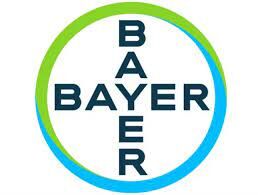Bayer, Leverkusen, Germany, announced on its website on June 24 a series of agreements that will substantially resolve major outstanding Monsanto litigation, including the United States’ Roundup product liability litigation, dicamba drift litigation and PCB water litigation.
The company will make a total payment of $10.1 billion to $10.9 billion to resolve potential future Roundup litigation, up to $400 million for dicamba drift litigation and up to $820 million for PCB water litigation exposure.
The main feature is the Roundup resolution that will bring closure to approximately 75% of the current Roundup litigation involving approximately 125,000 filed and unfiled claims overall. The resolved claims include all plaintiff law firms leading the Roundup federal multi-district litigation or the California bellwether cases, and those representing approximately 95% of the cases currently set for trial, and establish key values and parameters to guide the resolution of the remainder of the claims as negotiations advance.
The resolution also puts in place a mechanism to resolve potential future claims efficiently. The company will make a payment of $8.8 billion to $9.6 billion to resolve the current Roundup litigation, including an allowance expected to cover unresolved claims, and $1.25 billion to support a separate class agreement to address potential future litigation.
The Roundup class agreement will be subject to approval by Judge Vince Chhabria of the U.S. District Court for the Northern District of California. The resolutions were approved unanimously by Bayer’s Board of Management and Supervisory Board with input from its Special Litigation Committee. The agreements contain no admission of liability or wrongdoing.
Bayer also announced a mass tort agreement to settle the previously disclosed dicamba drift litigation involving alleged damage to crops. The company will pay up to a total of $400 million to resolve the multi-district litigation pending in the U.S. District Court for the Eastern District of Missouri and claims for the 2015-2020 crop years. Claimants will be required to provide proof of damage to crop yields and evidence that it was due to dicamba in order to collect. The company expects a contribution from its co-defendant, BASF, toward this settlement.
Bayer also announced a series of agreements that resolve cases representing most of the company’s exposure to PCB water litigation. Monsanto legally manufactured PCBs until ceasing their production in 1977. One agreement establishes a class that includes all local governments with EPA permits involving water discharges impaired by PCBs. Bayer will pay a total of approximately $650 million to the class, which will be subject to court approval.
Bayer officials comment on Roundup
“First and foremost, the Roundup settlement is the right action at the right time for Bayer to bring a long period of uncertainty to an end,” said Werner Baumann, CEO of Bayer. “It resolves most current claims and puts in place a clear mechanism to manage risks of potential future litigation. It is financially reasonable when viewed against the significant financial risks of continued, multi-year litigation and the related impacts to our reputation and to our business. The decision to resolve the Roundup litigation enables us to focus fully on the critical supply of healthcare and food. It will also return the conversation about the safety and utility of glyphosate-based herbicides to the scientific and regulatory arena and to the full body of science.”
“The Roundup agreements are designed as a constructive and reasonable resolution to a unique litigation,” said Kenneth R. Feinberg, court-appointed mediator for the settlement talks. “The separate, independent settlements of the current claims are unique and a tribute to Bayer. The significant progress made to date—which exceeds the initial participation rates of other claims resolution proceedings—provides a robust framework that will enable the parties to bring closure to the current Roundup litigation in due course.”
Resolution of Roundup litigation
The multi-step Roundup resolution includes several elements. The agreements will resolve the vast majority of the current litigation in U.S. federal and state courts, including both plaintiffs with filed cases and parties who have retained counsel but not yet filed their claims in court. Those participating in the settlement will be required to dismiss their cases or agree not to file. The range of $8.8 billion to $9.6 billion covers both the agreements already signed and those that are still under negotiation. It also reflects the fact that the number of claimants who are eligible to receive compensation under these agreements won’t be known until the claims process is well underway.
The claims still subject to negotiation largely consist of cases generated by TV advertising and for which plaintiffs’ law firms have provided little or no information on the medical condition of their clients, and/or cases held by law firms with small inventories.
The three cases that have gone to trial—Johnson, Hardeman and Pillio—will continue through the appeals process and are not covered by the settlement. It is important for the company to continue these cases as the appeals will provide legal guidance going forward. In an appellate court filing, the U.S. government expressed its specific support for the company’s preemption arguments, asserting that state law warning claims in the Roundup litigation conflict with U.S. federal law, requiring no cancer warning, and must be dismissed.
Recently, a federal judge in California found that the weight of scientific evidence does not support the state’s Proposition 65 cancer warning requirement for glyphosate-based herbicide—a ruling that reinforces the arguments the company has made at trial.
Potential future cases will be governed by a class agreement, which is subject to court approval. The agreement includes the establishment of a class of potential future plaintiffs and the creation of an independent Class Science Panel. The Class Science Panel will determine whether Roundup can cause non-Hodgkin’s lymphoma, and if so, at what minimum exposure levels. The materials considered by the Class Science Panel that Bayer has permission to disclose or are in the public domain will be posted on a public website.
The company said that before deciding to settle, it considered the alternative course of continuing to litigate Roundup cases. In the company’s risk assessment, potential negative outcomes of further litigation, including more advertising and growing numbers of plaintiffs, upwards of twenty trials per year and uncertain jury outcomes, and associated reputational and business impacts, likely would substantially exceed the settlement and related costs.
Resolution of dicamba litigation
Besides the mass tort settlement, the company also announced the only dicamba drift case to go to trial—Bader Farms is not included in this resolution. The company believes the verdict in Bader Farms is inconsistent with the evidence and the law and will continue to pursue post-trial motions and an appeal, if necessary
Bayer stands strongly behind the safety and utility of its XtendiMax herbicide with VaporGrip technology and continues to enhance training and education efforts to help ensure growers use these products successfully. The company is settling the pending dicamba drift cases to be able to focus on the needs of its customers.
Resolution of PCB litigation
At the same time, the company has entered into separate agreements with the Attorneys-General of New Mexico, Washington, and the District of Columbia to resolve similar PCB claims. For these agreements, which are separate from the class, Bayer will make payments that together total approximately $170 million. Funding sourced from free cash flow and Animal Health divestment .


